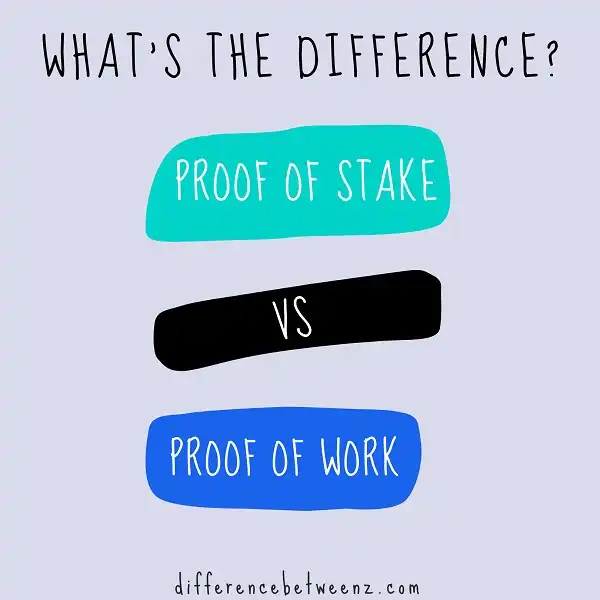Proof of work and proof of stake are two different systems that cryptocurrencies can use to determine who validates transactions and creates new blocks. In a proof of work system, the person who solves a difficult mathematical problem is rewarded with a new cryptocurrency. In a proof of stake system, the person who owns the most cryptocurrency is rewarded with a new cryptocurrency. Many people believe that proof of stake is a better system because it requires less energy and is more secure. However, there is still some debate about which system is better.
What is Proof Of Stake?
In crypto, Proof of Stake (PoS) is an algorithm by which a blockchain network aims to achieve distributed consensus. Under this consensus algorithm, nodes that hold crypto Capitals are chosen to validate transactions and produce new blocks, henceforth referred to as “forging” blocks. The crypto Capitals put up by the nodes are used as a form of stake, or skin in the game, so to speak, to align the incentives of the network participants with those of the network itself. This consensus mechanism was designed as an alternative to Proof of Work (PoW), which crypto projects like Bitcoin use. The big advantage that PoS has over PoW is that it is more energy efficient since it doesn’t require mining rigs that consume large amounts of electricity. In addition, PoS blockchains tend to be more scalable than PoW blockchains since they can process more transactions per second. Ethereum plans to eventually move from a PoW to a PoS consensus algorithm.
What is Proof Of Work?
Crypto currencies use a system called proof of work (POW) to validate transactions and add new blocks to the blockchain. Blocks are essentially bundles of transaction data, and they must be verified by crypto miners before they can be added to the blockchain. In order to verify a block, miners must solve a complex computational puzzle. The first miner to solve the puzzle is rewarded with crypto coins, and their solution is then used to verify the transaction data in the block. POW is a key part of the crypto currency ecosystem, and it helps to ensure that transactions are secure and trustworthy. crypto investors often look for projects that use POW in order to ensure that their investment is well-protected.
Difference between Proof Of Stake and Proof Of Work
The key difference between proof of stake and proof of work is that proof of work is a system that requires an expensive mining process to validate transactions and produce new blocks, while proof of stake allows users to validate transactions and produce new blocks in proportion to their stake. Both proofs of work and proof of stake are protocols used to achieve consensus in a decentralized network. However, they use different mechanisms to achieve this goal. Proof of work is the most widely used consensus mechanism. It was first proposed by Satoshi Nakamoto in 2008 and implemented in the Bitcoin network. In a proof of work system, miners compete against each other to validate transactions and produce new blocks. The block with the most valid transactions is added to the blockchain, and the miner who produced it is rewarded with a certain amount of cryptocurrency. The main advantage of proof of work is that it is very secure; it is very difficult for an attacker to control more than 50% of the network. Proof of stake, on the other hand, does not require any expensive mining equipment. Instead, users can validate transactions and produce new blocks in proportion to their stake.
Conclusion
While both Proofs of Work and Proof of Stake are viable options for securing a blockchain, there are some key differences. What is the right choice for your project will depend on a variety of factors, including the goals of your project and the resources you have available.


